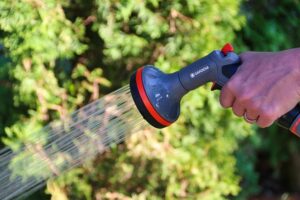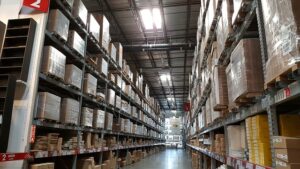Commercial air curtains are vital for maintaining food safety and hygiene in various sectors. They act as barriers against contaminated air, controlling temperature and humidity, and preventing weather-borne contaminants. Stainless steel construction ensures durability and easy cleaning. Correct installation is key to optimal performance, energy efficiency, and reduced maintenance costs, especially with heated door air curtains. These systems are game-changers for food service businesses, combining hygiene preservation with cost savings.
“Elevate your food service environment with the power of stainless steel commercial air curtains—a game-changer in maintaining hygiene and efficiency. This comprehensive guide explores the significance of these advanced systems for ensuring food safety, highlighting the benefits of stainless steel construction. We’ll navigate design and installation intricacies to optimize performance, and delve into maintenance strategies for long-lasting cleanliness. Discover how commercial air curtains revolutionize food service operations.”
- Understanding Commercial Air Curtains for Food Safety
- Benefits of Stainless Steel in Food Service Environments
- Design and Installation Considerations for Optimal Performance
- Maintaining Hygiene and Efficiency with Advanced Air Curtain Technology
Understanding Commercial Air Curtains for Food Safety

Commercial air curtains are essential components in maintaining food safety and hygiene within service environments. These entrance air barriers act as a physical barrier, preventing contaminated air from entering clean zones. By creating a climate separation between interior and exterior spaces, they ensure that harsh weather conditions don’t compromise the internal environment. Door air curtains, or heated air curtains, are particularly crucial in retail door systems, warehouse entrances, and commercial entrances, where maintaining HVAC efficiency is paramount.
The energy-saving technology incorporated into these industrial air barriers not only enhances their functionality but also contributes to overall operational cost savings. By regulating the flow of air, these advanced systems help maintain optimal temperatures and humidity levels, which is vital for food preservation. This, in turn, leads to improved energy efficiency, making them a smart investment for any business in the food service industry.
Benefits of Stainless Steel in Food Service Environments

Stainless steel brings a multitude of benefits to food service environments, making it an ideal material for commercial air curtains. Its inherent resistance to corrosion and stains ensures that these air barriers maintain their cleanliness and aesthetic appeal over time, crucial factors in maintaining hygiene standards and customer satisfaction. Additionally, stainless steel is known for its durability, withstanding the demanding conditions often found in food service settings, from high foot traffic to constant exposure to moisture and temperature fluctuations.
Beyond aesthetics and durability, stainless steel commercial air curtains offer superior performance as entrance air barriers, door air curtains, and industrial air barriers. They facilitate effective climate separation, enhancing HVAC efficiency and reducing energy consumption by preventing unwanted drafts and heated or cooled air loss at commercial entrances, warehouse entrances, and retail door systems. The use of energy-saving technology in stainless steel air curtains contributes to cost savings and environmental sustainability, making them a smart choice for forward-thinking food service establishments.
Design and Installation Considerations for Optimal Performance

When designing and installing commercial air curtains for food service environments, careful consideration is crucial to ensure optimal performance. The first step involves assessing the specific needs of the space, including the size of commercial entrances, door systems, and warehouse openings. Proper measurement ensures that the chosen air curtain—whether heated or unheated, with energy-saving technology—effectively creates a climate separation barrier without compromising airflow.
Installation techniques should focus on seamless integration to maintain hygiene standards and minimize maintenance. Proper sealing around the perimeter of the door air curtains prevents the infiltration of unwanted elements, enhancing HVAC efficiency. Additionally, leveraging industrial air barriers at strategic locations can further bolster energy conservation efforts, ensuring that commercial environments remain comfortable while optimizing operational costs.
Maintaining Hygiene and Efficiency with Advanced Air Curtain Technology

Maintaining hygiene and efficiency in food service environments is paramount, and advanced air curtain technology plays a pivotal role in achieving this balance. Commercial air curtains, like heated door air curtains or entrance air barriers, act as robust first lines of defense against contamination. By creating a powerful yet controlled flow of air, these systems prevent the spread of germs and particles, ensuring a sterile workspace for food preparation.
Moreover, modern air curtain technology offers energy-saving solutions with innovative design features. Heated air curtains, for instance, not only enhance climate separation at commercial entrances but also contribute to HVAC efficiency in retail door systems, warehouse entrances, and other industrial settings. This dual functionality not only maintains optimal conditions but also reduces operational costs, making it a game-changer for businesses aiming to streamline their processes while preserving hygiene standards.
Commercial air curtains, especially those made from stainless steel, are a game-changer for food service environments. By understanding their role in maintaining food safety, leveraging the benefits of stainless steel construction, and considering design and installation best practices, businesses can ensure optimal performance and enhance hygiene standards. Advanced air curtain technology offers efficient solutions to keep spaces bustling and safe, making them an essential investment for any food service operation.






